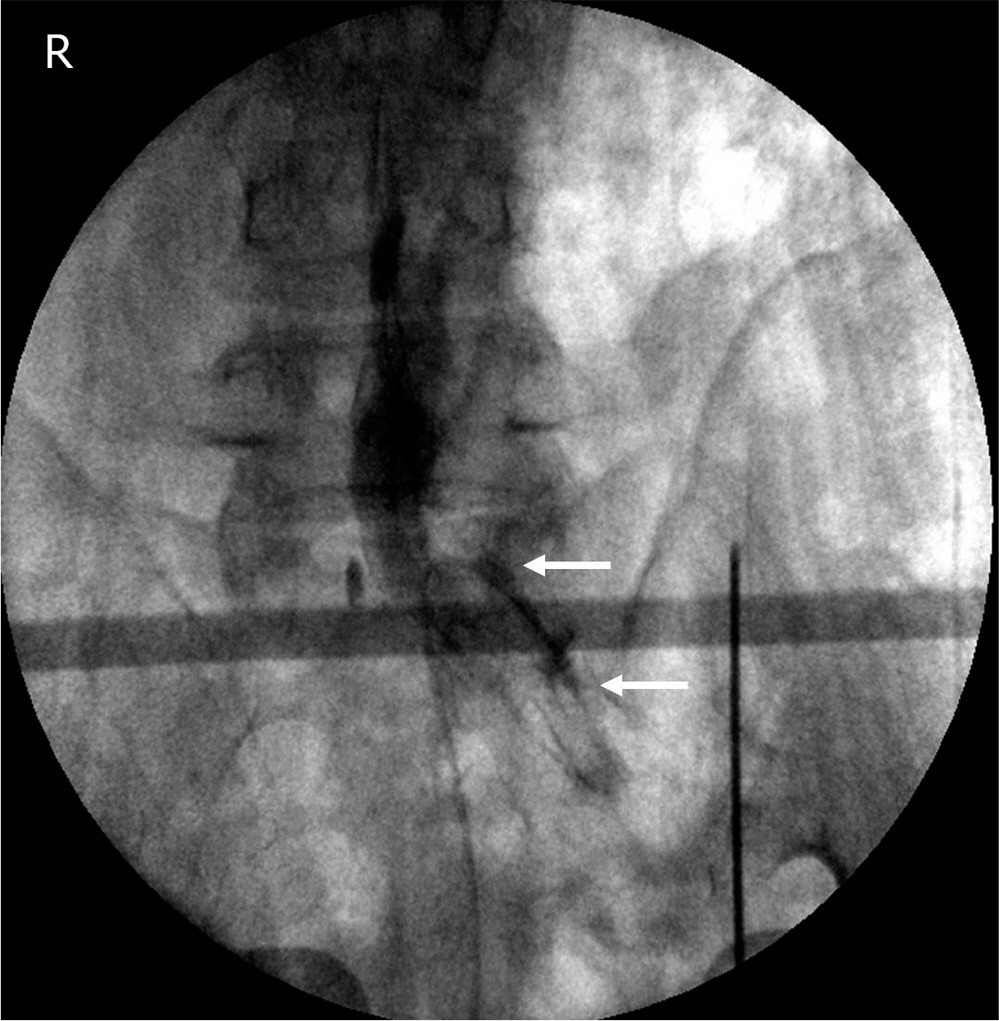J Korean Soc Spine Surg.
2013 Jun;20(2):67-70. 10.4184/jkss.2013.20.2.67.
Huge Epidural Hematoma after Epidural Neurolysis using NaviCath(R)
- Affiliations
-
- 1Department of Orthopedic Surgery, Seoul Veterans Hospital, Seoul, Korea. drortho@korea.com
- 2Department of Pain Clinics, Seoul Veterans Hospital, Seoul, Korea.
- 3Department of Radiology, Seoul Veterans Hospital, Seoul, Korea.
- KMID: 1430378
- DOI: http://doi.org/10.4184/jkss.2013.20.2.67
Abstract
- STUDY DESIGN: Case report.
OBJECTIVES
To report a huge epidural hematoma after epidural neurolysis. SUMMARY OF LITERATURE REVIEW: No complications have been reported regarding to hematoma formations after neurolysis using NaviCath(R). MATERIAL AND METHODS: A 67-year-old male with normal serum coagulation parameter experienced excruciating back and leg pains after neurolysis using NaviCath(R).
RESULTS
After performing prompt multilevel laminotomy with hematoma evacuation, the patient recovered from pains without any neurological sequelae.
CONCLUSIONS
It is important to be cautious while performing neurolysis with NaviCath(R) to avoid the epidural hematoma. Surgical treatment is an effective option to resolve the spinal epidural hematoma.
Keyword
Figure
Reference
-
1. Talu GK, Erdine S. Complications of epidural neuroplasty: a retrospective evaluation. Neuromodulation: Technology at the Neural Interface. 2003; 6:237–47.
Article2. Kreppel D, Antoniadis G, Seeling W. Spinal hematoma: a literature survey with meta-analysis of 613 patients. Neurosurgical review. 2003; 26:1–49.
Article3. Lee JH, Lee SH. Clinical effectiveness of percutaneous ad-hesiolysis using Navicath for the management of chronic pain due to lumbosacral disc herniation. Pain Physician. 2012; 15:213–21.4. Racz G, Holubec J. Lysis of adhesions in the epidural space. Techniques of Neurolysis. Boston: Kluver Academie Pub-lishers;1989. p. 57–72.5. Racz GB, Heavner JE, Trescot A. Percutaneous lysis of epidural adhesions? Evidence for safety and efficacy. Pain Practice. 2008; 8:277–86.6. Gilbert A, Owens BD, Mulroy MF. Epidural hematoma after outpatient epidural anesthesia. Anesthesia & Analgesia. 2002; 94:77–8.
Article7. Stoll A, Sanchez M. Epidural hematoma after epidural block: implications for its use in pain management. Surgical neurology. 2002; 57:235–40.
Article8. Ahn BW, Kim CK, Yoon JH, et al. Cauda Equina Syndrome due to Epidural Hematoma After Lumbar Epidural Block-A Case Report. Journal of Korean Society of Spine Surgery. 2009; 16:134–7.9. Groen RJM, Ponssen H. Vascular anatomy of the spinal epidural space: considerations on the etiology of the spontaneous spinal epidural hematoma. Clinical Anatomy. 1991; 4:413–20.
Article10. Fukui MB, Swarnkar AS, Williams RL. Acute spontaneous spinal epidural hematomas. American journal of neuroradiology. 1999; 20:1365–72.
- Full Text Links
- Actions
-
Cited
- CITED
-
- Close
- Share
- Similar articles
-
- Thoracolumbar Epidural Hematoma Complicated by Cauda Equina Syndrome : Complication of Systemic Heparinization Following Epidural Anesthesia: A case report
- The Huge Epidural Hematoma: Analysis of 39 Cases
- Spontaneous Spinal Epidural Hematoma
- Epidural hematoma treated by aspiration after transforaminal epidural steroid injection - A case report -
- Bilateral Parasagittal Epidural Hematoma




